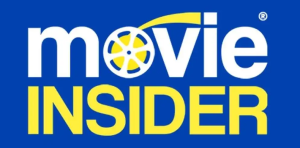Ad Blocker Detected
We use ads to keep this site running, so please consider disabling your ad blocker. Thank you!
Do not know how to disable ad blocker? Check out this article: How to disable ad blocker?
Son of the South 2021

In Montgomery, Alabama, a young man's journey sparks a revolution against racial inequality. As the grandson of a Klansman, he must confront his family's legacy and choose between conformity and courage. Inspired by true events from Bob Zellner's autobiography, this drama follows one man's quest to defy the status quo and bring about change during the tumultuous Civil Rights era.
Does Son of the South have end credit scenes?
No!
Son of the South does not have end credit scenes.
Actors
Meet the cast of Son of the South and learn about the talented actors who brought the characters to life. Explore their roles and career highlights.

Shamier Anderson

Ludi Lin

Brian Dennehy
J.O. Zellner

Cedric the Entertainer

Lex Scott Davis

Lucy Hale
Carol Ann

Lucas Till
Bob Zellner

Michael Sirow
Jay-Jay

Sienna Guillory

Jim Klock
Younger

Julia Ormond
Virginia Durr

Jake Abel
Doc

Cian Genaro
John Hill

Mike C. Manning

Nicole Ansari-Cox
Professor Kleiner

Sharonne Lanier
Rosa Parks
Links
Explore where to watch Son of the South online. Find reviews, ratings, and detailed movie information on other platforms like Metacritic, Rotten Tomatoes, TMDb or Wikipedia
Ratings
Discover how Son of the South is rated on popular platforms like IMDb, Metacritic, and TMDb. Explore audience and critic scores to see how this movie ranks among the best.

60
Metascore
4.5
User Score


%
TOMATOMETER

0%
User Score

66
%
User Score

5.00/5
From 2 fan ratings
Movie Quiz
Challenge your knowledge of Son of the South with an engaging quiz. Test your memory of the movie’s characters, plot twists, and unforgettable moments.
Son of the South Quiz: Test your knowledge about the Civil Rights Movement with this quiz based on the movie 'Son of the South'.
Where does Bob Zellner attend college?
Plot Summary
Get the full story of Son of the South with a detailed plot summary. Dive into its themes, characters, and the twists that make it a must-watch.
The story begins on April 5, 1961, when we meet Bob Zellner (/actor/lucas-till), a senior at the all-White Huntingdon College in Montgomery, Alabama. As the son of a Methodist minister, Zellner’s curiosity about race relations grows, leading him to team up with four fellow students on an enlightening expedition to delve into this intricate issue. Their journey brings them to a Baptist Black church, where they participate in a gathering commemorating the fifth anniversary of the Montgomery bus boycott (1955-1956), orchestrated by influential civil rights leaders like Ralph Abernathy and Rosa Parks.
As the evening progresses, law enforcement arrives to apprehend those gathered, but Zellner and his friends evade capture by swiftly exiting through a back door. This experience leaves a lasting impression on Zellner, earning them the moniker “Huntingdon Five” in local media. Shortly after, a haunting reminder of intolerance appears on the lawn outside Zellner’s residence — a cross burned by the Ku Klux Klan.
A pivotal moment occurs on May 19, 1961, when Zellner witnesses an assault on the Freedom Riders. He immediately jumps into action to aid Jessica Mitford during a crucial moment. Starting off as a passive advocate for civil rights, Zellner’s involvement intensifies as he becomes the first White field secretary for the SNCC. Initially greeted with skepticism from some Black activists, he knows he must demonstrate his true dedication and commitment to the cause.
On a fateful night in McComb, Mississippi, on October 30, 1961, Zellner experiences a traumatic event during a march to the county courthouse, narrowly escaping a lynching by local white southerners. This terrifying ordeal shakes him to his very core. Following the murder of Herbert Lee, Zellner is prompted to reflect on his role in the civil rights movement. A violent confrontation with a former associate who had been involved in the attempted lynching serves as a wake-up call for him. Zellner’s resolve strengthens, and he recommits himself to advocating for civil rights.
The film concludes with a moving montage showcasing Zellner’s activist efforts throughout the 1960s, paying homage to his mentor, the late John Lewis, who significantly influenced his path.
Videos
See the latest videos related to Son of the South. Explore trailers, interviews, and behind-the-scenes content that give you a deeper look into the film.
Keywords
Discover the keywords that describe the themes and topics of the movie. Explore the keywords that define the essence of the film.
Featured on this page

What's After the Movie?
Not sure whether to stay after the credits? Find out!
Check out our other apps:
Actors
Companies
Latest Movies
© 2025 What's After the Movie. All rights reserved.















